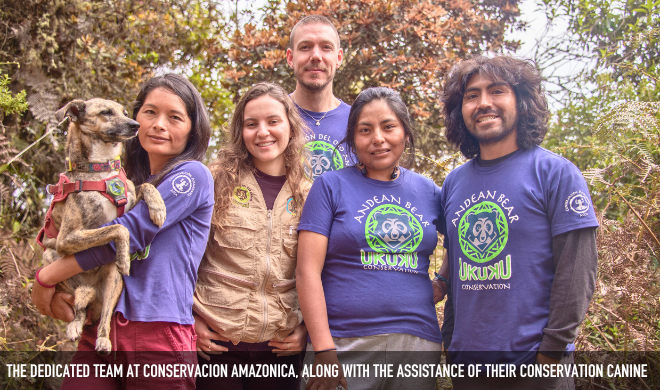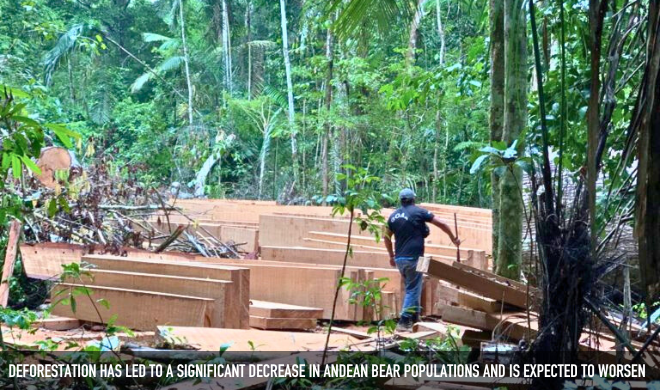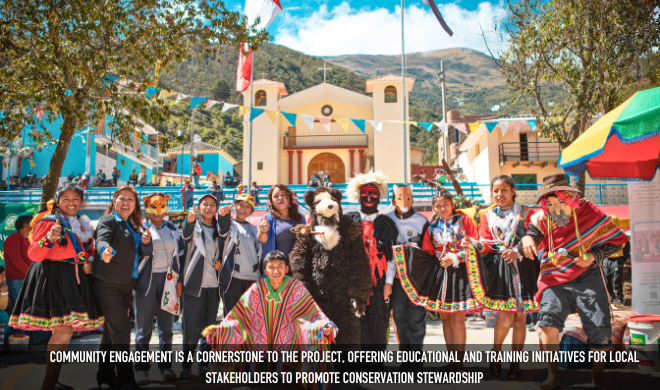Coexisting with Andean Bears in the heart of Peru
Partners: Conservacion Amazonica and Airbus Foundation
Key Species: Andean bear, puma, dwarf deer, Andean cat, Andean fox, oncilla, giant anteater, jaguar
2024 Award Winner
In the heart of the majestic Manu Biosphere Reserve, where the rugged peaks of the Andes meet the lush expanse of the Amazon rainforest, a dedicated team embarks on a mission vital to the survival of one of South America's most iconic creatures: the Andean bear.
Nestled within the Kosñipata-Carabaya region, these elusive bears - vital contributors to reforestation and regulation of their environment - alongside puma and the diminutive dwarf deer, face an array of threats: habitat fragmentation, illegal poaching and climate change. But amidst these challenges, an innovative approach led by Conservacion Amazonica is blending cutting-edge technology with grassroots community engagement.
Mapping bear life: harnessing spatial data
Using the power of high-resolution satellite data donated by the Airbus Foundation, along with machine learning algorithms and on-the-ground wildlife tracking solutions, the team plans to map out intricate bear habitats, trace their movement patterns and monitor the ever-shifting landscape.
With technical support, funding and data analysis from Connected Conservation, this collaboration will enable the identification of crucial climate corridors (a connected stretch of habitat that facilitates the movement of species between larger areas of suitable habitat) and facilitate informed habitat protection and restoration strategies.
The team will also delve deeper into understanding Andean bear home ranges and their interactions with livestock. This comprehensive approach will allow for the pinpointing of conflict hotspots between Andean bears and livestock, ultimately facilitating the development of tailored conflict management strategies.
Cultivating conservation ambassadors
Through educational programs and training initiatives, the team will cultivate a new generation of conservation ambassadors, fostering a sense of ownership and pride in protecting their shared environment.
Scientific research and advocacy
The team will use this scientific research to accelerate advocacy efforts and influence policy, to catalyse legislative changes for designated climate corridors, where the species can thrive in a rapidly changing world.
Overall, the impacts of the Andean Bear Conservation Program will extend beyond the borders of the Kosñipata-Carabaya region. Their innovative community engagement models aim to inspire local environmental stewardship, fostering a culture of sustainable conservation practices on a global scale.







